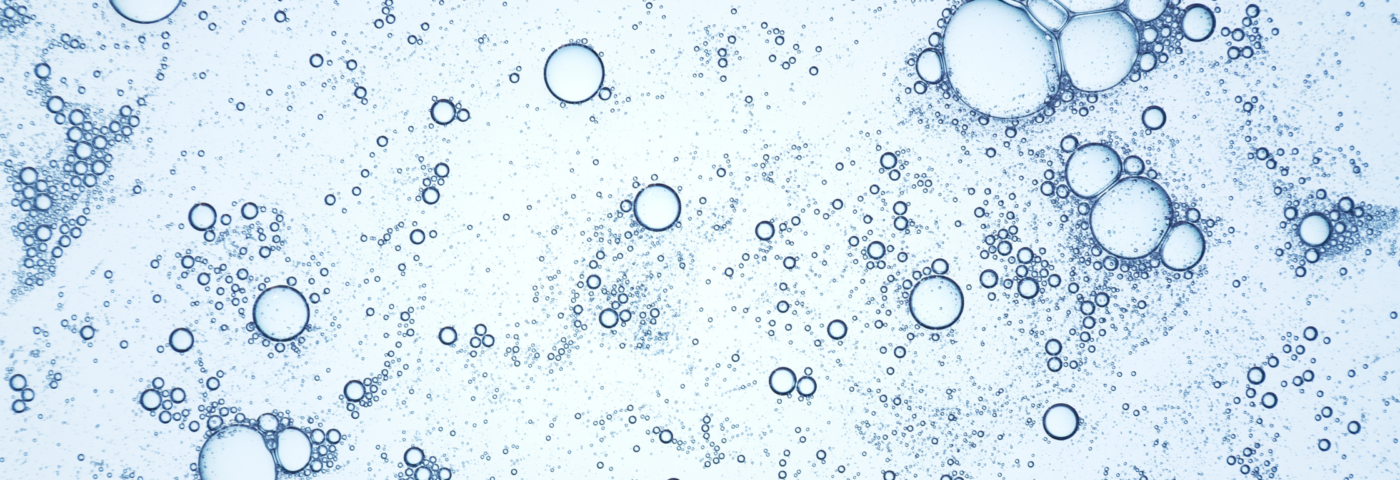Amongst the myriad of new cosmetic product launches every year, the one material that can be relied upon to yield outstanding results are peptides. This blog will explore the science of these remarkable structures, and how they enable companies to offer customers cosmetic products with big results from tiny molecules.
What are peptides?
In the personal care industry, the term ‘peptide’ refers to molecules that are short chain amino acids – very small substances – that are able to traverse to the stratum basale and signal physiological changes at the dermal level. They differ greatly in size to hydrolysed proteins – if you are lost on discussions of size and structure, watch this video which explains the difference between peptides, proteins and collagen in cosmetic formulas.
Here is an example: the botox-like action of a hexapeptide addresses the signs of ageing by inhibiting muscular contractions. If you can stop the contractions, you effectively stop the appearance of a wrinkle. Providing a ‘mimic’ peptide in cosmeceutical form which binds in place of the peptide normally produced by the body can prohibit the muscular contraction. The result… less facial expressions, and less wrinkles!

Other peptides perform in similar ways: by blocking peptides normally produced by the body when you don’t want the activity (like wrinkles); or replacing missing peptides that are not produced in sufficient quantities (as occurs through the ageing process). There are peptides available to combat the signs of ageing, whiten the skin and even lengthen the lashes!
Why do some products work better than others?
One of the biggest challenges a Cosmetic Chemist always faces is formulating a cosmetic to ensure delivery of an active to the required site.
Water soluble substances need to be extremely small to traverse the stratum corneum. Lipid soluble substances can travel through lipid bilayers when small, but even if they can enter a pathway, they then have an incredibly large distance to travel, compared to their size, to penetrate beyond the stratum corneum. Watch this video on cosmetic absorption by the skin to see how difficult delivery of cosmetic actives and ingredients can be.
This is particularly important with the delivery of peptides – they are extremely small and can traverse to the stratum basale and beyond; but compared to their size, they need to travel an incredibly HUGE distance. The formulation base they are in becomes an essential component to enable the bulk of their passage through the epidermis. Once they are ‘delivered’ to the stratum basale, their ability to travel into the dermis and make a difference is certain – but getting them there is the hard part.
To provide the required activity, peptides must be provided to the skin in a suitable carrier base to reach the stratum basale target site. This is usually best achieved using an emulsion (amphiphilic) base combined with humectant agents and/or liposomal delivery agents. Watch this video to learn about other cosmetic formula penetration enhancers.
Using key materials to ensure delivery of peptide cosmetic actives to the stratum basale will give a competitor product a leading edge over another brand using the same active in the same proportion but in a poor delivery base. This comes down to clever formulating by the Cosmetic Chemist to ensure the best possible visible results for a consumer.
Why isn’t peptide technology marketed on cosmetic products?
Since cosmetics are defined as products to visibly alter the skin, the science of HOW these materials work can’t be explained to consumers in any form of marketing because that would be making physiological claims, which is not permitted for cosmetics.
So, while peptide suppliers and Cosmetic Chemists can discuss how peptides work in the skin, products containing these cosmetic materials cannot market this science to a consumer.
How much is needed to get results?
Only a very small amount of peptide is needed to get the required results, as long as the formula enhances delivery to where they need to go! Some consumers think the lower a cosmetic ingredient appears on the label, the less likely it is to work, but when it comes to peptides, that is absolutely not true! These substances are so small that not much is needed to get amazing visible results. As little as 77mcg is all that is clinically required, per application, to get the amazing results with the hexapeptide I mentioned in this blog – some other peptides are required in even smaller quantities for other skin or hair benefits!
How to choose the right peptide for cosmetic formulas?
When choosing which peptide to use in a cosmetic formula, follow these rules:
- Review clinical efficacy data for the type of base formula used and input required
- Peptides with the same INCI name from different suppliers will not necessarily yield the same results, so be specific when purchasing peptide ingredients from your cosmetic supplier – choose the one with the efficacy data specific to their material
- Ensure the right input is used and observe any compatibility requirements when putting the cosmetic formula together
- Enhance delivery where possible using clever cosmetic formulation techniques
When you get the right amount of an effective peptide to the deeper layers of the epidermis, you’ll always get great results.
Happy formulating!
Enjoyed this article? Get more by subscribing to our newsletter!

